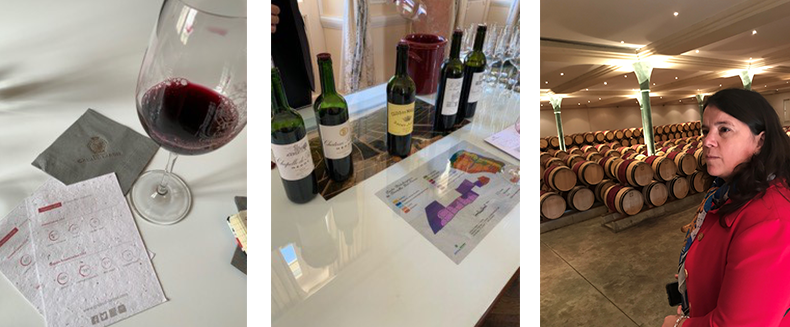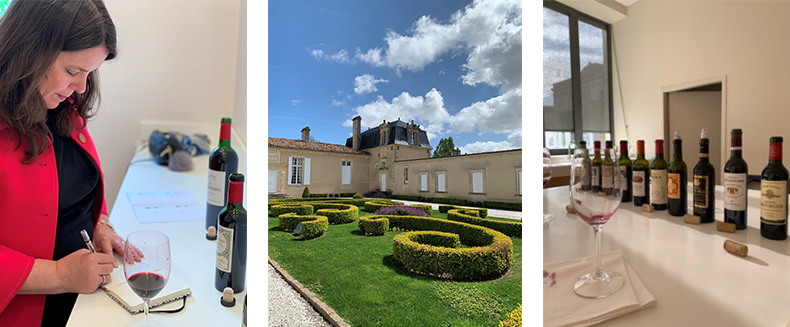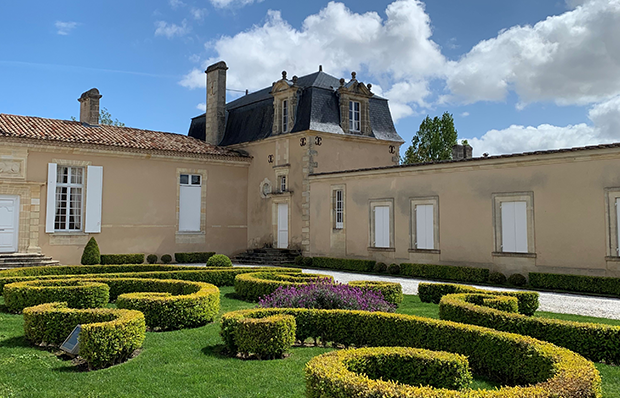Overall, this is a great-to-excellent vintage. This does come on the back of many, very good vintages in Bordeaux. This is a vintage to explore, one that will benefit those who put it in the cellar and one that demands serious attention. The purity and seductive nature of the best wines from this vintage will ensure that.
The winter prior to this vintage was unusually wet, the rain continuing through spring. Mildew and hail were an issue for a number of properties this year. These factors combined to see many properties have very low yields. A number who are organically or biodynamically farmed yielded as low as 11hl/ha. Though the low yields don’t sit only with these farming practices.

What followed was a very warm summer, with the heat continuing month after month and creating drought like conditions. In fact, this was the hottest summer in the 20th century for the region. Vineyard health, and water retention in it, playing an important role through the heat. A little rain at the right time provided the freshness required, though was short lived. The conditions around the harvest were then ideal.
Alcohol levels in the 2018 wines are generally quite high, with many well over 14%. This in itself is not an issue as long as the wines did not ‘taste hot’ and that the overall wine still showed balance, which, for the most part for the wines we tasted, they did. The level of abv is not prominent as these are big wines, there’s an abundance of fruit, very silky rich tannins and a seductive nature to the wines. Wines with good acidity then have a freshness to them that results in a gorgeous charming wine. This acidity and resulting freshness will be the key to longevity from this vintage.
When tasting a new vintage of Bordeaux, there is often discussion about which vintage this closely relates to – is this the warmth of the 2003 vintage, ripeness of the 2009 or freshness of the 2010? The answer of course is – it’s the 2018 vintage, its own character. However, comparisons do provide us with a frame of reference, so in my mind, there’s a purity to these wines, particularly the Cabernet, that does remind me of the 2016 vintage. There’s a richness to the fruit that does lend itself to being compared with the 2009 vintage, the freshness somewhere between the 2010 and 2015.

White wines from the 2018 vintage were not an easy task, though the best are very good and in fact many wines were exceptional. The warmth of the summer resulted in some cases with very tropical rich Sauvignon Blanc without the acidity to provide structure. Though some properties did manage the picking time and achieved freshness and beautiful fruit.
Sauternes was a game of two halves, there are excellent 2018 sweet wines. Château Suduiraut stands out, though it’s not as rich or sweet as previous vintages. 2018 Sauternes will make excellent aperitif wines when young and then be beautiful with mid term ageing.
One thing is very clear with the 2018 vintage, the top wines are excellent, exceptional in many cases. What is more variable is the quality of the wines below that. In particular maturity management, to ensure the wines have balance, is the key. So, whilst there’s a host of top properties whose 2018 wines will leave a legacy, the wines that sit in the next tier are a little more uneven in qualitative terms and thus careful selection (which we’ll ensure) is required. The wines in that tier that are good are in fact excellent.
So, yes, it’s an excellent vintage, though not homogenous in quality across the region. It’s also a year that can’t be defined as a Cabernet year, nor Merlot, or Left Bank vs Right Bank. The consistency of one appellation did stand out for me, the wines from Saint-Julien are very good this year.




